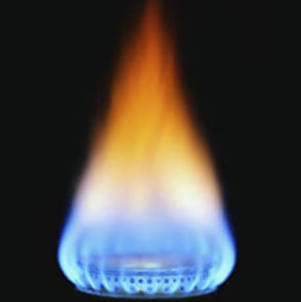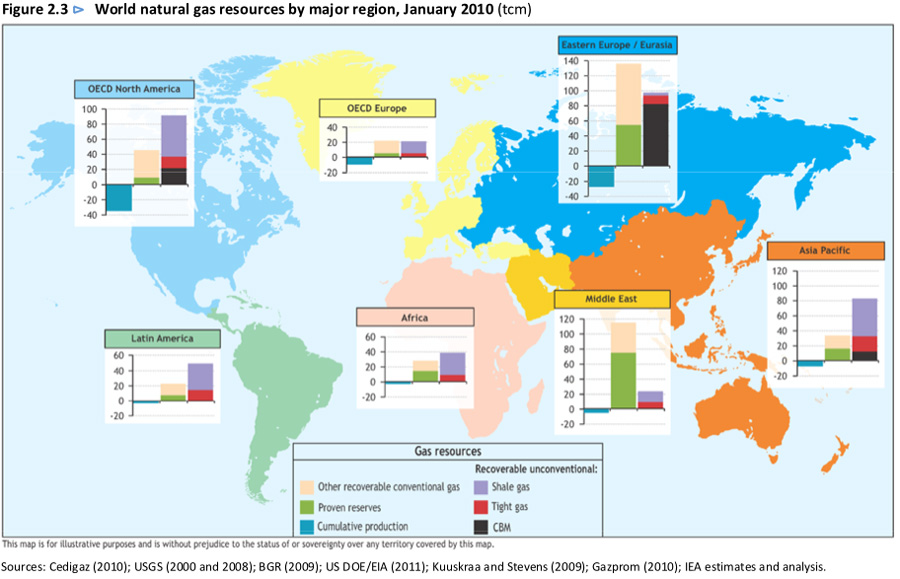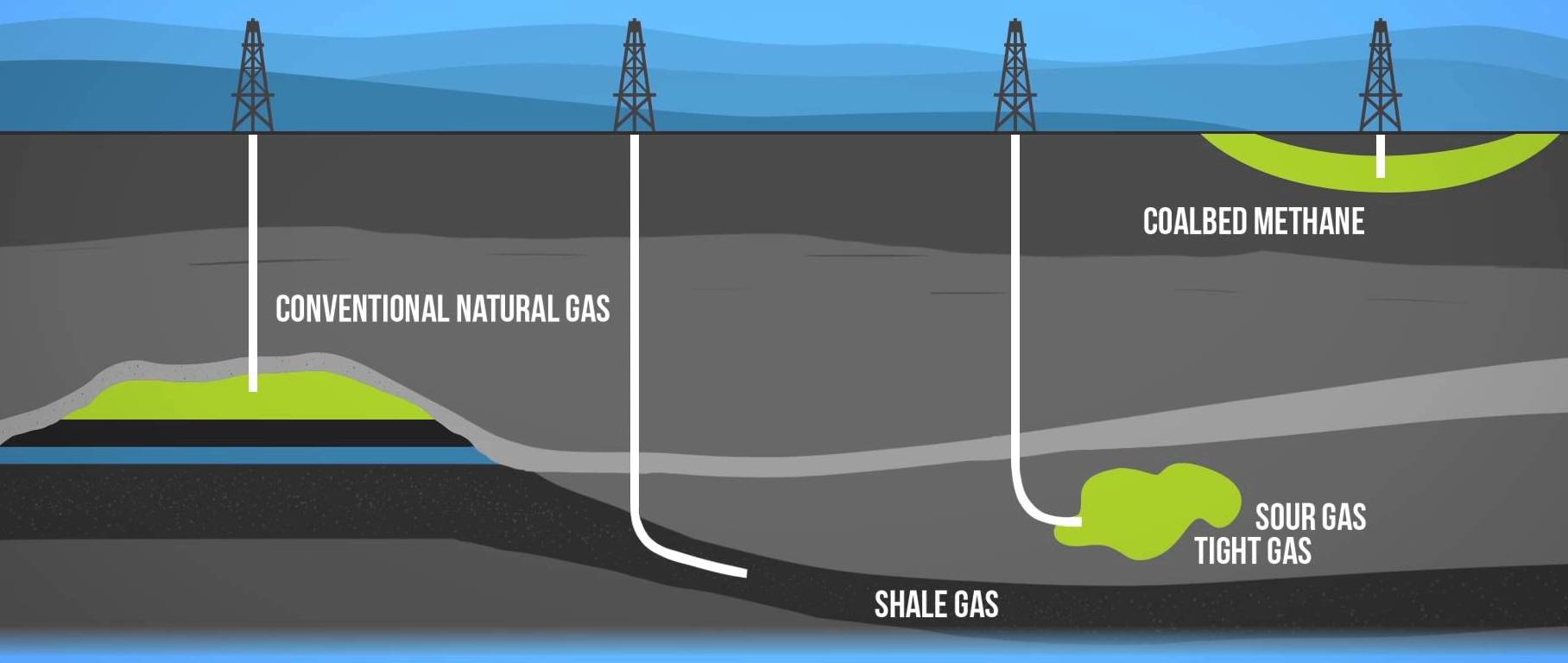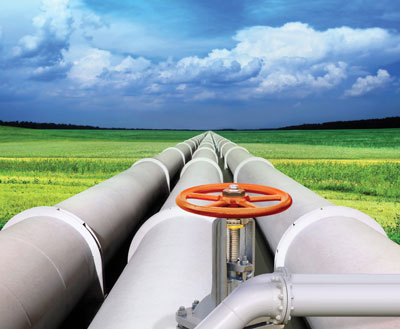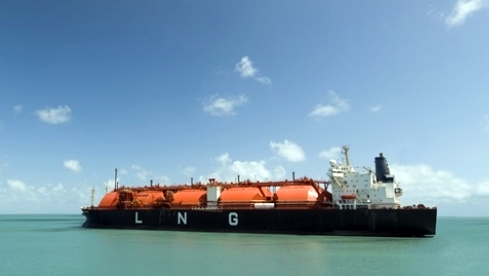Natural Gas 101 : What you don’t know
Natural gas 101 : occurs deep beneath the earth's surface. Natural gas consists mainly of methane, a compound with one carbon atom and four hydrogen atoms. Natural gas also contains small amounts of hydrocarbon gas liquids and nonhydrocarbon gases. We use natural gas as a fuel and to make materials and chemicals. It is also used as fuel for vehicles and as a chemical feedstock in the manufacture of plastics and other commercially important organic chemicals. Fossil fuel based natural gas is a non-renewable resource.
How did natural gas form?
Natural gas is a fossil fuel. This means it originates from the remains of plants and animals that lived many millions of years ago. These organisms were buried and exposed to heat as a result of being highly compressed underneath thousands of meters of soil and rock. These forces transformed the once living organisms into natural gas.
Natural Gas Map : Where do we find it?
According to International Energy Agency :
The global natural gas resource base is vast and widely dispersed geographically. Conventional recoverable resources are equivalent to more than 120 years of current global consumption, while total recoverable resources could sustain today's production for over 250 years.
 International Energy Agency
International Energy Agency
Here's a great map showing how the world's gas deposits are distributed.
CBM stands for coal bed methane. Cumulative production is the difference in how much gas has been extracted versus magnitude of gas deposits known to exist. The rest is pretty self-explanatory.
Conventional recoverable resources are equivalent to more than 120 years of current global consumption, while total recoverable resources could sustain today's production for over 250 years - IEA
How do we get natural gas?
Geologists, using sophisticated technology, help locate potential pools of natural gas, so they know where to drill a well to extract gas. However, due to the complexity of locating natural gas trapped many metres, and sometimes kilometres, below the surface, the exploration process is not always successful.
The natural gas withdrawn from a well is called wet natural gas because it usually contains liquid hydrocarbons and non-hydrocarbon gases. Methane and other useful gases are separated from the wet natural gas near the site of the well or at a natural gas processing plant. The processed gas is called dry or consumer-grade natural gas. This natural gas is sent through pipelines to underground storage fields or to distribution companies and then to consumers.
Once removed from an underground reservoir, the natural gas is usually transferred to a gas processing plant to remove impurities and by-products. Some of these by-products, including ethane, propane, butane, and sulphur (usually from sour gas), are extracted for other uses. After being processed, the clean natural gas (almost pure methane) is transported through a network of pipelines and delivered to its point of use, including our homes
How does it reach us?
Piplines
Pipelines transport natural gas to our homes and businesses.
- Gathering pipelines (raw natural gas directly from the wellhead to the gas processing plant)
- Transmission pipelines (highly pressurized and processed natural gas sent in large volumes over great distances) From the transmission pipelines, the gas flows into a low-pressure distribution system. As a safety precaution, utility companies add an odorant to the gas (so we can smell it in the unlikely event of a leak) and then send it to us through a network of smaller pipelines.
- Distribution pipelines (supply gas to homes and businesses) Distribution companies decrease the pressure with a regulator before it reaches the consumer. Meters measure the gas that is consumed.
Liquified Form or LNG
Where natural gas cannot be delivered on land, it can be liquefied and delivered by ship. Compared to gas pipelines, liquefied natural gas (LNG) shipping is preferred for international transport because, in a liquid form, natural gas takes up less volume, making it easier for shipment and storage. LNG infrastructure includes a gas pipeline leading to the seaside, gas liquefaction plant, storage facilities and an LNG terminal for shipment. After being liquified and transported to the area of demand, LNG is returned to gas form at regasification plants at the terminal.
LNG ships are equipped with sophisticated leak detection technology, emergency shutdown systems, advanced radar and positioning systems, and numerous other technologies designed to ensure the safe and secure transport of LNG.
LNG ships are double-hulled and heavily insulated, with an extensive cargo safety system. LNG is not stored under pressure. As in all modern oil tankers, sophisticated radar and positioning systems alert the crew to other traffic and hazards around the ship. Distress systems and beacons automatically send out signals if the ship experiences difficulty.
Ships also employ anti-piracy and boarding measures and must comply with the requirements of the International Ship and Port Security Code. The cargo control room is manned continuously when cargo is being transferred to and from the ship.
Natural Gas Vs Oil
Description
Oil actually refers to any viscous liquid that is not soluble in either water or alcohol. It can include edible oils as well as petrochemicals
Natural Gas is a lightweight, colorless, odorless substance that is made up of primarily methane.
Origins
Oil comes out from the ground. It was created over millions of years by pressure being exerted on organic substances. Today it is found in porous rock formations. Sometimes there will be a large open space underground that is filled with a ‘sea of oil.’ It can also be found in sand traps; a very difficult place from which to extract it.
Natural Gas comes from a variety of sources. Sometimes it is found underground, often associated with oil fields. It can also be found by itself in natural gas fields. It is also produced through natural processes in bogs, landfills, and sewage or manure dumps.
Application
Oil when burned will produce a concentrated flame. It therefore used for heating. It is also used for hot water heaters. When refined into petrol, it is used to power internal combustion engines in cars and trucks. A cruder refinement is used to power electricity plants. Oil can also be used as a lubricant.
Natural Gas is mainly used to power the turbines that create electricity. It is also canned and or piped into home and used for gas stoves and other domestic purposes. If it is canned and compressed, it can be used to power a converted combustion engine that will power a car.
Environmental Impact
Oil produces greenhouse gases and other chemicals when it is burned. An oil spill can also be disastrous to an environment as it is so difficult to clean up.
Natural Gas also produces greenhouse gases, but to a less extent than oil. When accidentally released into the environment, gas is relatively benign, but a concentrated build up can cause an explosion.
Quiz Time !
Now that you have made it so far time to take a short quiz to test your knowledge about natural gas !

